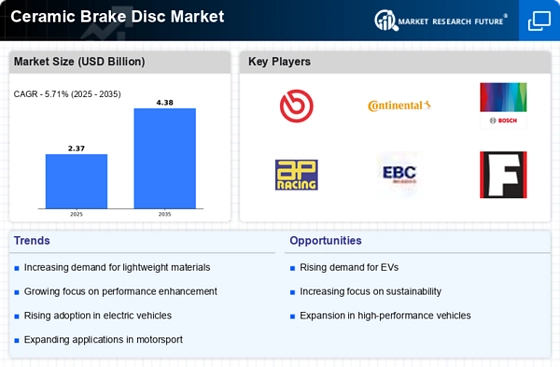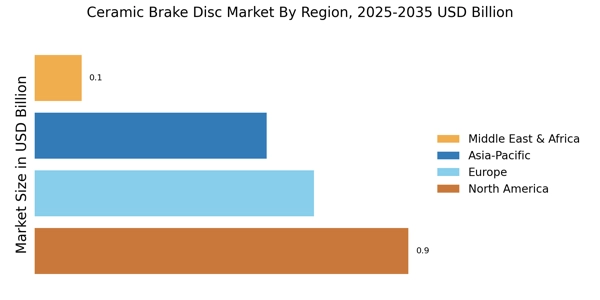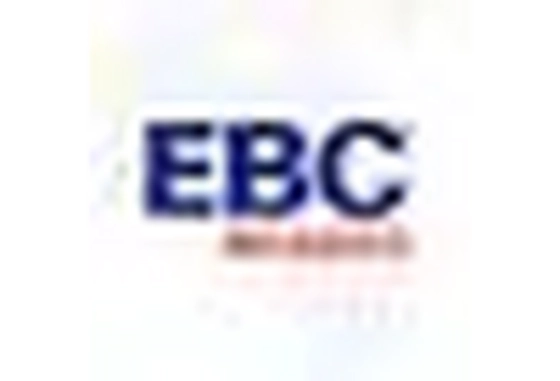Growth of the Automotive Aftermarket
The growth of the automotive aftermarket is another significant driver for the Ceramic Brake Disc Market. As vehicle ownership continues to rise, the demand for replacement parts, including ceramic brake discs, is expected to increase. Consumers are increasingly opting for high-quality aftermarket products to enhance the performance and longevity of their vehicles. The ceramic brake disc segment is likely to benefit from this trend, as these products are perceived to offer superior performance compared to traditional options. Market analysts project that the aftermarket for ceramic brake discs could expand at a rate of 5% annually, driven by the increasing preference for premium replacement parts among consumers. This growth presents a lucrative opportunity for manufacturers and suppliers in the ceramic brake disc market.
Increasing Focus on Safety Standards
The Ceramic Brake Disc Market is also being driven by the increasing focus on safety standards in the automotive sector. Regulatory bodies are implementing stringent safety regulations that necessitate the use of high-performance braking systems. Ceramic brake discs, with their superior heat resistance and braking performance, are well-positioned to meet these evolving safety requirements. As a result, automotive manufacturers are increasingly incorporating ceramic brake discs into their vehicles to comply with safety standards and enhance overall vehicle performance. This trend is likely to boost the market, as consumers become more aware of the importance of safety features in their vehicles. The emphasis on safety is expected to contribute to a steady growth trajectory for the ceramic brake disc market in the coming years.
Rising Demand for Lightweight Materials
The demand for lightweight materials in the automotive sector is significantly influencing the Ceramic Brake Disc Market. As manufacturers strive to enhance fuel efficiency and reduce emissions, the adoption of lightweight components has become paramount. Ceramic brake discs, known for their lower weight compared to traditional metal discs, are increasingly favored in high-performance and electric vehicles. This trend is expected to propel the market, as lightweight ceramic brake discs contribute to improved vehicle dynamics and handling. According to recent estimates, the lightweight materials segment is anticipated to account for a substantial share of the automotive components market, further solidifying the position of ceramic brake discs as a preferred choice among manufacturers.
Environmental Concerns and Sustainability
Environmental concerns and the push for sustainability are becoming increasingly relevant in the Ceramic Brake Disc Market. As consumers and manufacturers alike prioritize eco-friendly practices, the demand for sustainable automotive components is on the rise. Ceramic brake discs, which are often produced with less environmental impact compared to traditional materials, align well with these sustainability goals. The market is witnessing a shift towards products that not only perform well but also adhere to environmental standards. This trend is likely to drive innovation in the ceramic brake disc sector, as manufacturers seek to develop more sustainable production methods and materials. The emphasis on sustainability is expected to play a crucial role in shaping the future of the ceramic brake disc market.
Technological Advancements in Manufacturing
The Ceramic Brake Disc Market is experiencing a notable transformation due to advancements in manufacturing technologies. Innovations such as precision casting and advanced sintering techniques have enhanced the production efficiency and quality of ceramic brake discs. These improvements not only reduce production costs but also increase the performance and durability of the products. As a result, manufacturers are able to offer high-performance ceramic brake discs that meet the stringent requirements of modern vehicles. The market is projected to grow at a compound annual growth rate of approximately 6% over the next five years, driven by these technological enhancements. Furthermore, the integration of automation in manufacturing processes is likely to streamline operations, thereby increasing the overall output of ceramic brake discs in the market.


















Leave a Comment